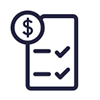According to data compiled by TransUnion, the average credit card debt for Americans was an estimated $6,329 through the second quarter of 2024. This was an increase of about 6% from the roughly $5,090 average credit card balance Americans had at the same time in 2023.
But what does that number mean exactly? And if your household debt is near—or even above—the average credit card debt in the United States, what steps can you take to start paying it down?





